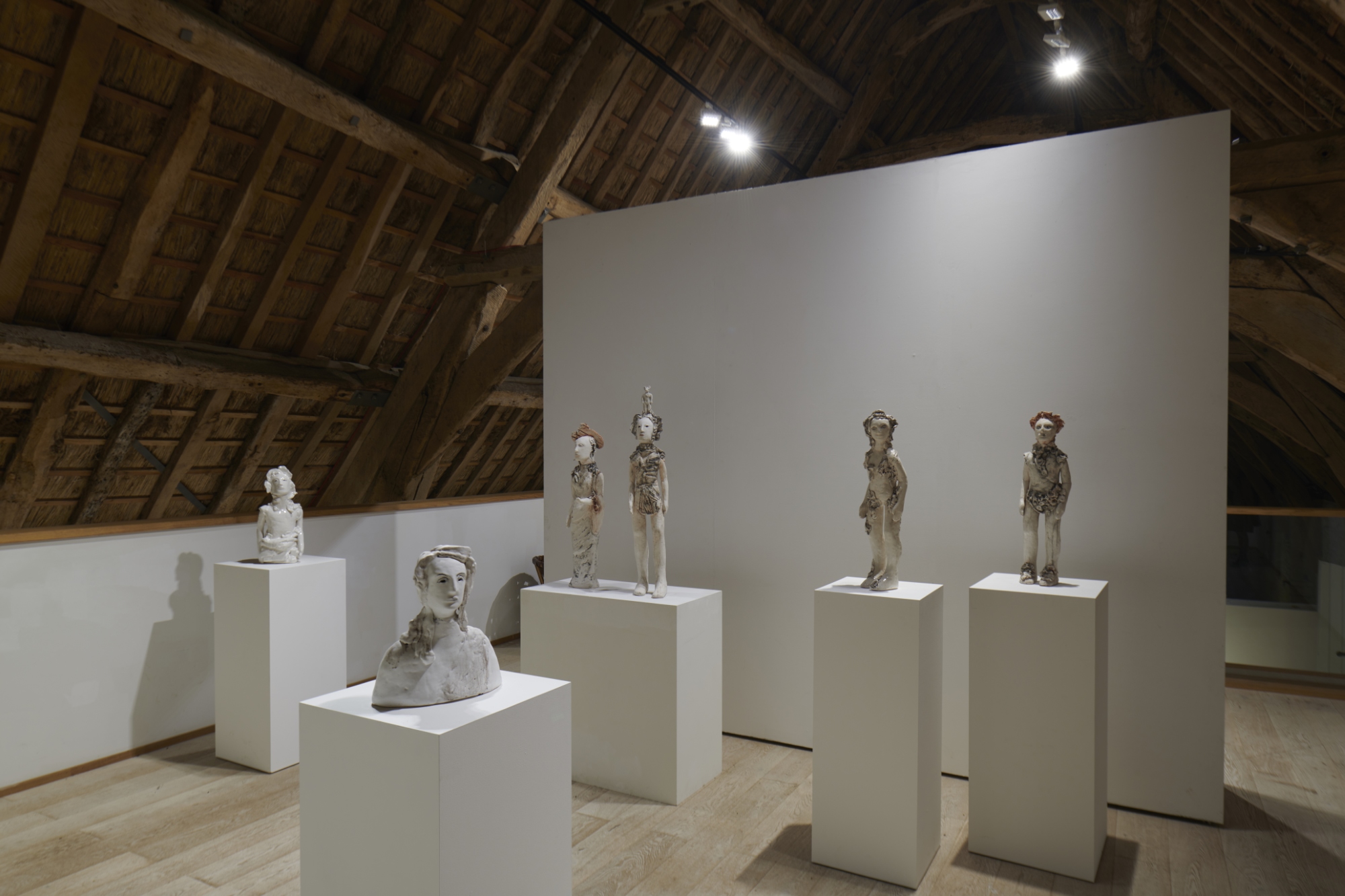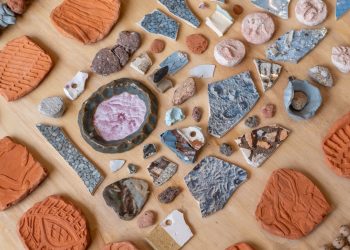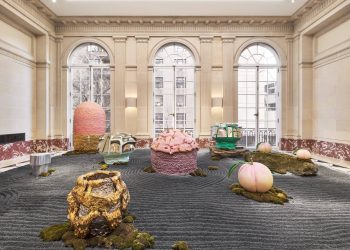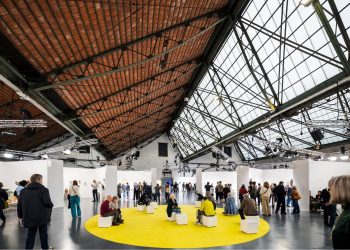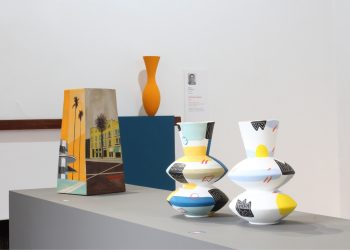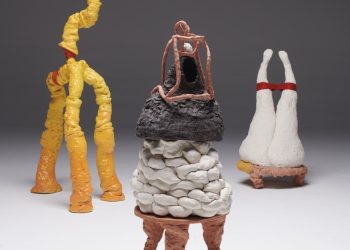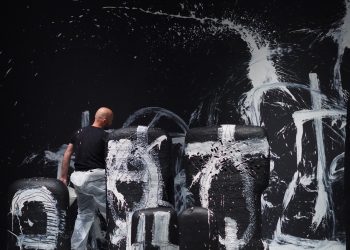By Natalie Baerselman le Gros
Christie Brown’s figures teeter on the foggy intersection between art and craft. Very clearly sculptural but informed by a deep history of clay. Upon graduating with a diploma in Studio Pottery at Harrow in the early 1980s, Brown found her work without an obvious niche. Alongside her studies in clay, Brown had taken up life drawing, traditionally a fine art practice, but she saw a potential correlation between the drawn line and clay forms. Encouraged by her tutors, clay provocateurs like Mo Jupp and Richard Slee, Brown attempted a translation of line to clay and began sculpting figures. Early works were suggestive of the body, torso reliefs but became full-bodied, freestanding with limbs, heads, and eyes that returned your gaze. Figurative sculpture was, and is, a prominent genre of the fine art world, but Brown’s use of clay set her apart from this.
Similarly, in the ceramic world, key makers tested the preconceptions of clay through the Abstract Vessel. Still, figurative ceramics had enjoyed a different coming-of-age in the UK than in the US. As such, Brown’s figures are born into otherness from the very beginning. Almost indefinable, they are never quite set in one discipline, seesawing between craft and art, challenging those preconceived ideas. But look closer, and it’s clear this otherness runs much more profound.
Brown’s ceramic figures awaken a primal notion in the viewer, conjuring empathy, curiosity, and perhaps anxiety or fear. These figures have a life of their own. They may appear still and static, but Brown plays on generations of tall tales, years of playful childhood memories and tropes of popular culture in theatre, cinema and television to spark our demiurgical aspirations. Perhaps, when your back is turned, these figures might move, might whisper to each other, playing games when the lights are out. Brown insists they are well-behaved but even chastises them as she leaves her studio each night.
Brown maintains that her sculptures are not about the body but are concerned with representations of the human form, mimetic objects such as dolls, puppets and statues. Her sculpting method, press molding bodies and collaging hand-sculpted appendages lend a repetitious quality, almost production-line made, and each series has a sense of kinship. As such, the viewers’ doll-like associations to Brown’s work are intentional; she has no ambitions towards verisimilitude.
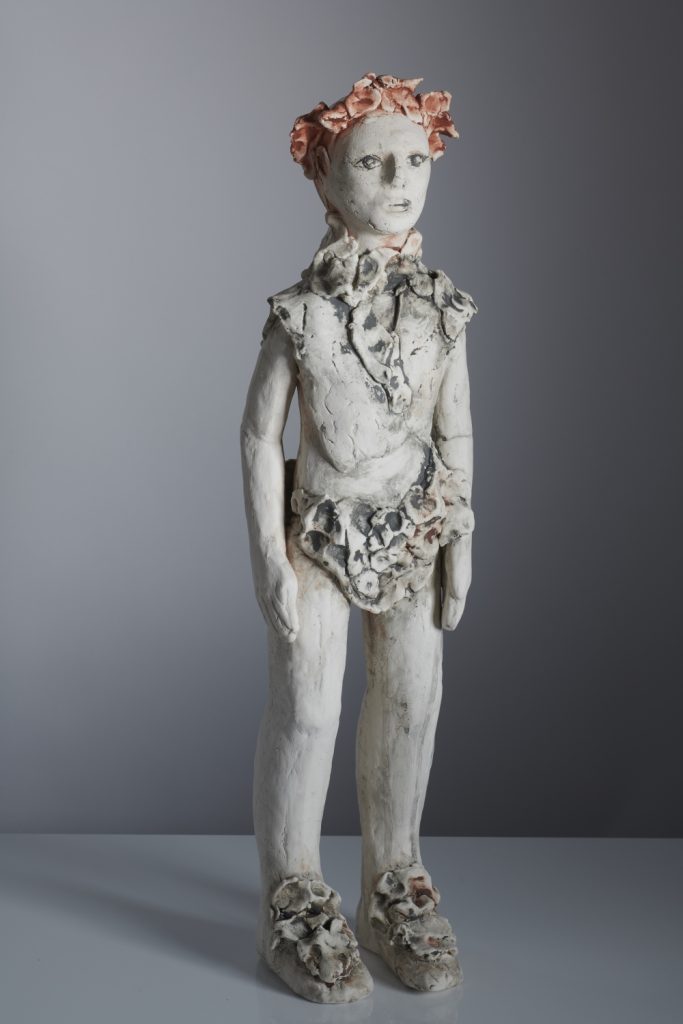
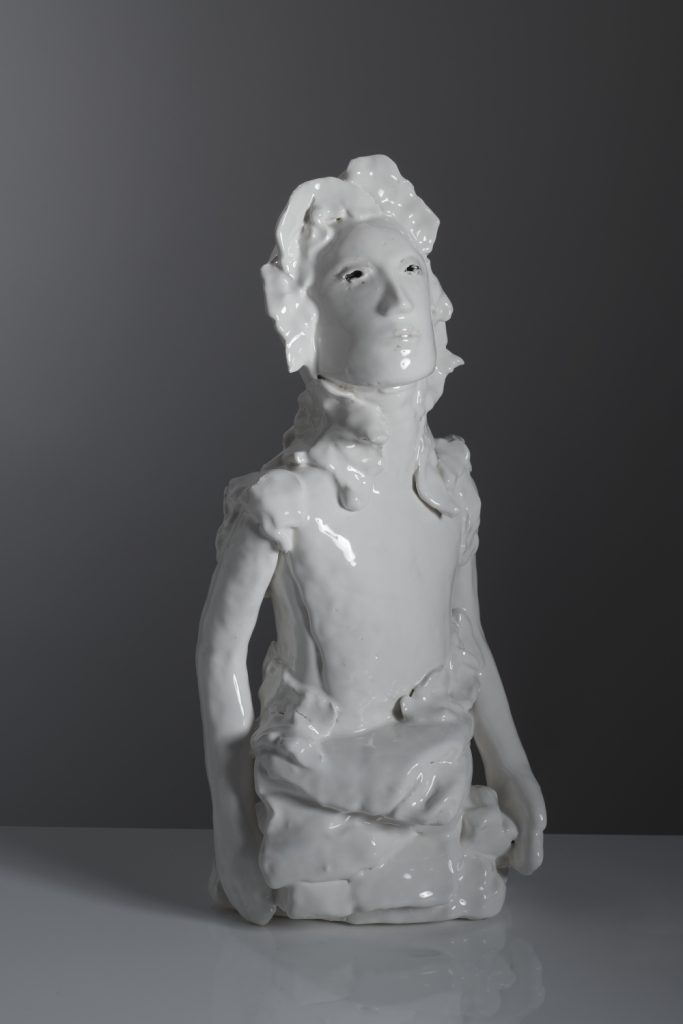
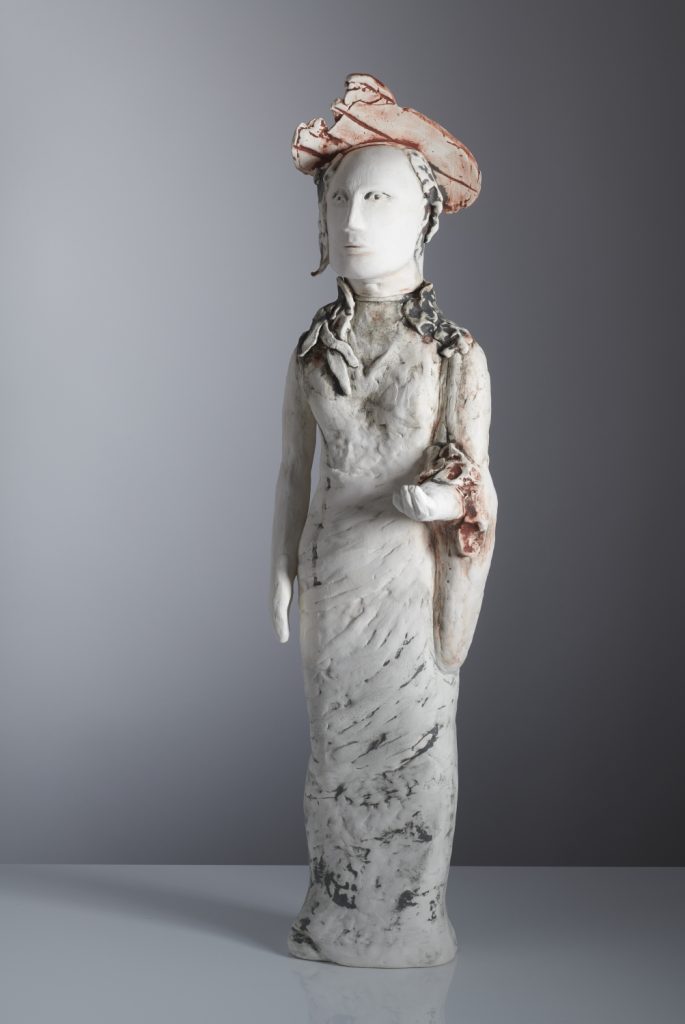
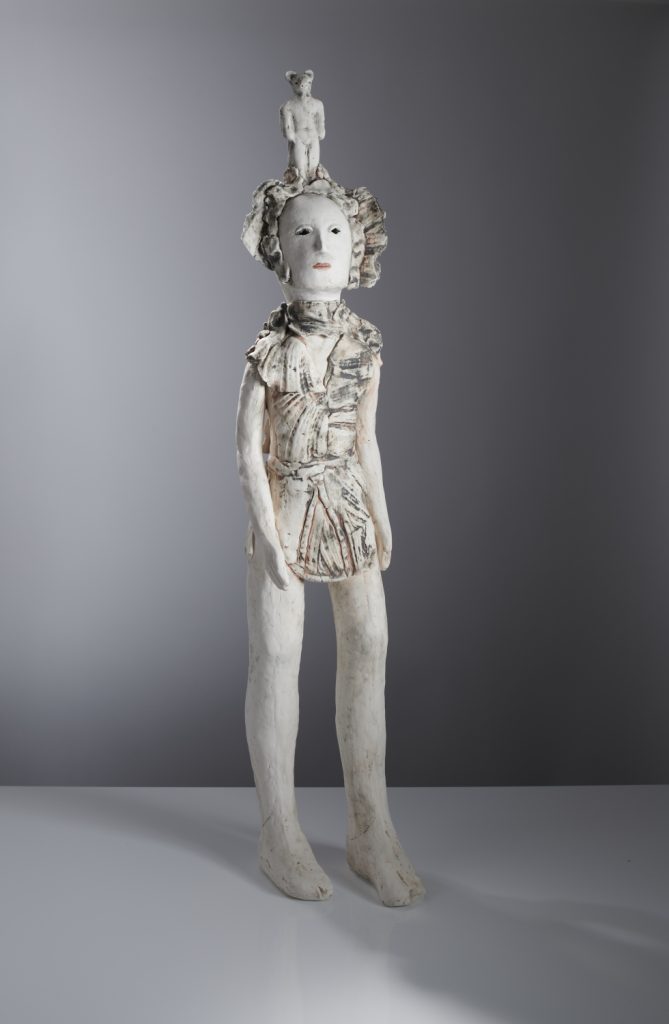
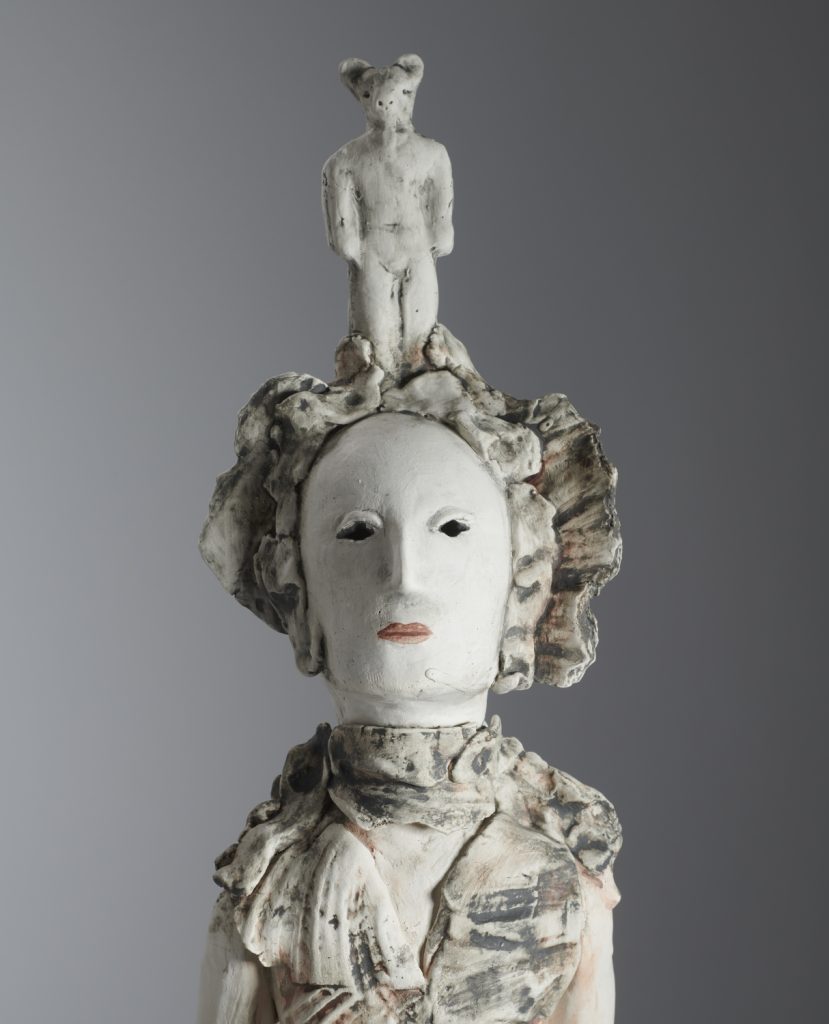
Brown’s figures emerge from a deep interest in psychoanalysis and archaeology. Before discovering clay, Brown was reading Freud and Jung, exploring the collective unconscious and the dream world. Her practice references ancient mythology, contemporary folklore, archetypes, and artifacts to reconnect our personal unconscious with collective instincts. Freud proposed archaeology as a metaphor for psychoanalysis, excavating the mind to find buried relics of the subconscious. For Freud and so Brown, historic objects and museum collections are markers of history and interlocutors of the past, bridging the known and unknown, the conscious and unconscious. Following this, Brown has worked in response to numerous museum collections, including the Petrie Museum, the Freud Museum, and the Museum of Childhood. Brown’s newest works, instead of reaching back into history and delving into our psyche, address the here and now of the human condition, confronting the viewer with themselves. The life we see in Brown’s works may appear unconnected to her influences, but our reaction is deeply rooted in our experience with human-like figures, from play in childhood to ritual in death.
Our enlivening of Brown’s human-like entities is an essential function, somewhere between animism and anthropomorphism, imbuing an object with anything from the simple spark of life to a complete personality. This spectrum of life is the core of our experience of Brown’s work. Philosopher Carveth Read described animism as an effect of deification during ritual activity, causing a venerated object to be perceived as imbued with life or spirit as interlocutors between an unseen plane and our reality. For Jung, such ritual behaviors channel psychic energy toward the unconscious. Brown’s figures function between these theories, they seek to bond with the collective unconscious through the personification of archetypes, such as ancient symbols of liminality and the hybrid beast, to bridge our individual conscious and unconscious psyche, and animism is the vehicle. Read’s animism can be applied to any object, human-like or otherwise. Still, the particular mythmaking around animated human-like objects explains our attribution of life in Brown’s figures.
Statues are generally built for reverence as markers of importance to celebrate the individuals they depict. Sculpted figures are raised, literally and symbolically, to attract attention, be they religious, aristocratic, or domestic characters, and they are, to an extent, deified. Following Read, from deification to animation, so has developed a rich historical and contemporary narrative of those objects coming to life in the living statue. Beginning, appropriately, with stories worldwide of the Creator forming humankind from earth’s clay to Ovid’s Metamorphoses, where sculptor Pygmalion falls in love with his statue, later brought to life by the Goddess Aphrodite. Other examples follow across time and medium: Queen Hermione in Shakespeare’s The Winter’s Tale, Oscar Wilde’s The Happy Prince, and avenging Talos in Jason and the Argonauts. Brown’s figures tap into this recurring motif to provoke our anthropomorphizing of her sculptures, a universal reaction symbolic of a collective archetypal instinct. Brown has found much inspiration in statuary; many figures recall classical archaic sculpture, particularly. Her early torso forms seem plucked from the ancient Parthenon, and full-body figures echo the archaic Greek Kouros in their static posture, enlivened through modest gestures and subtle counterpoise. From the viewer, Brown’s living statues may interact and influence as in the stories above or merely be watchful and guarded, enjoying admiration.
Brown’s research practice explores the non-decorative history of clay, examining museum holdings and archaeological treasures. Her work links not only with imposing architectural statuary but with personal commemorative objects from burials and private enshrinement dug from buried tombs. She has found particular inspiration in ancient Egyptian things, half-human half-animal deity statuettes, hordes of faience shabti figurines, the workforce of the afterlife, and clay memorial amulets imbued with protective spirits. Brown’s figures, her animal-human hybrids, in particular, connect our contemporary consciousness with these ancient symbols that acted as mediators between the everyday and the mysterious, the physical and the ethereal.
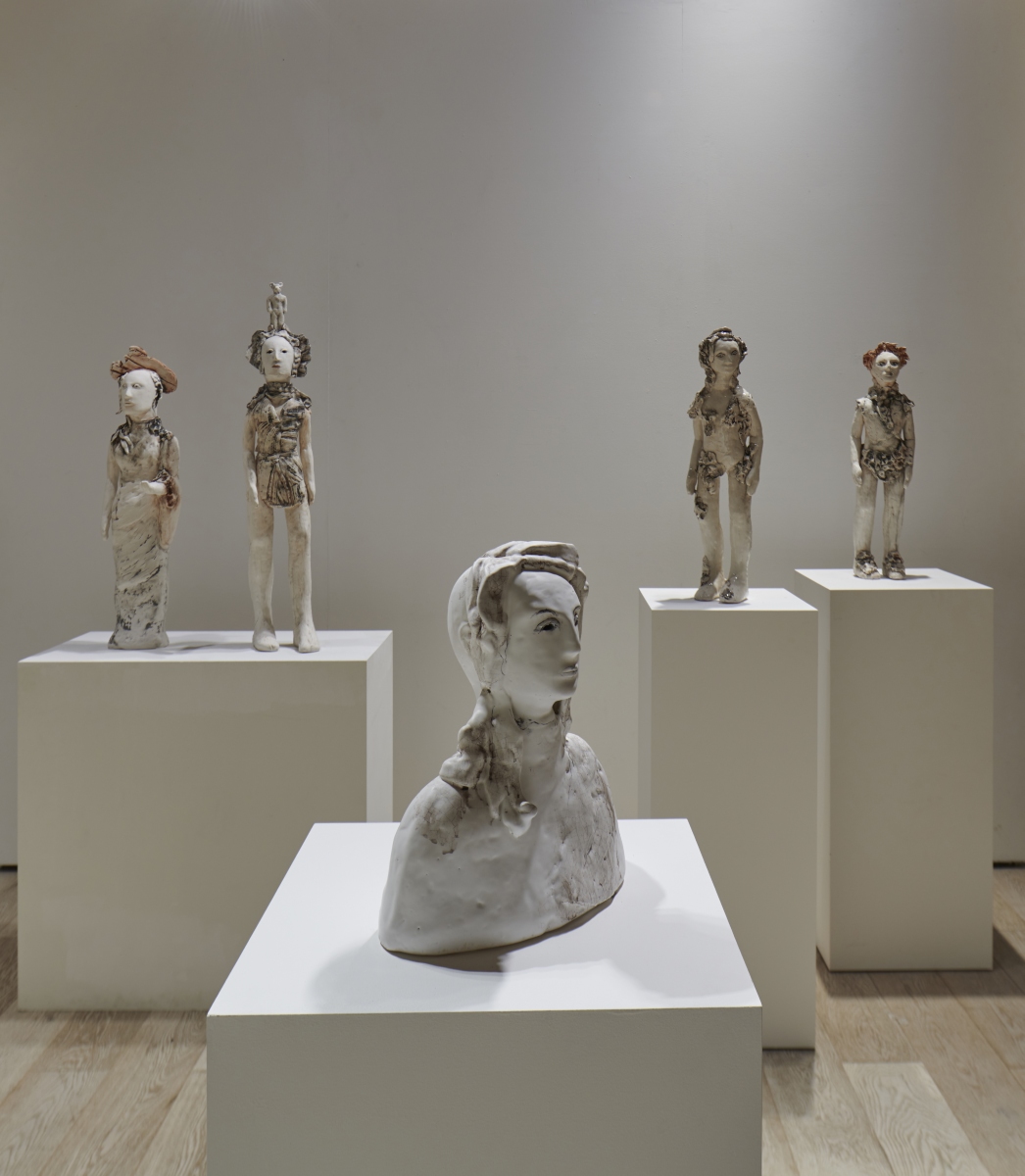
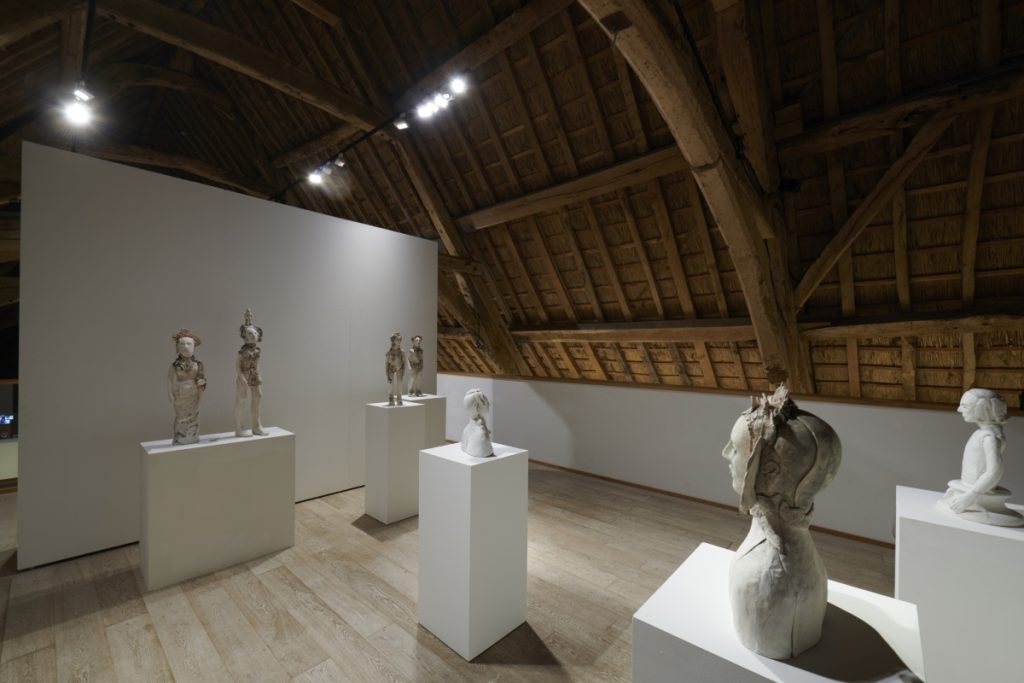
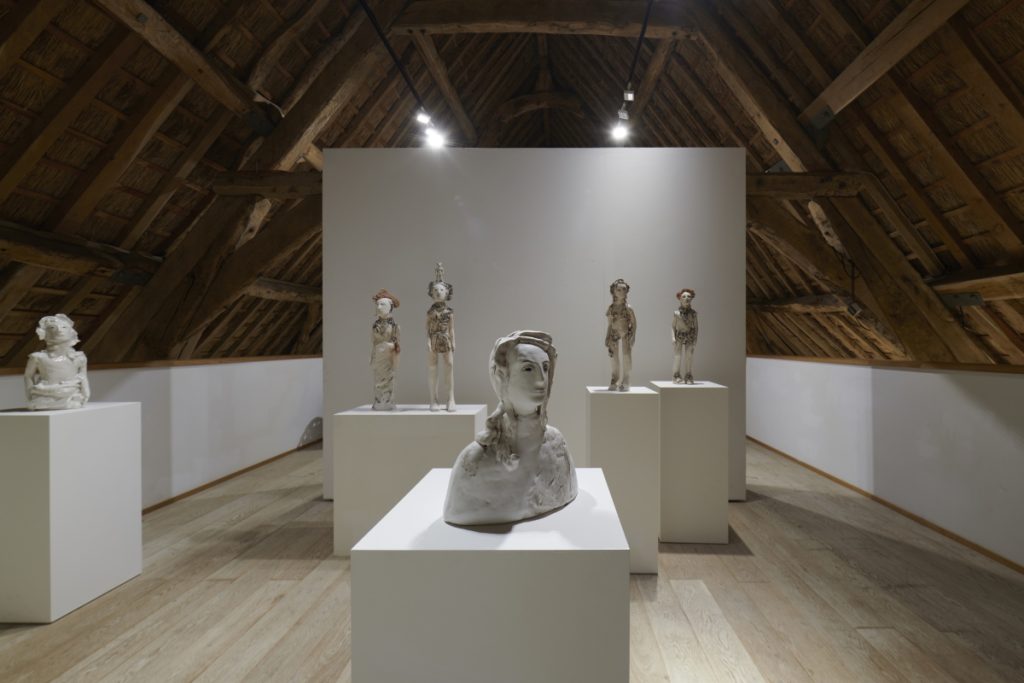
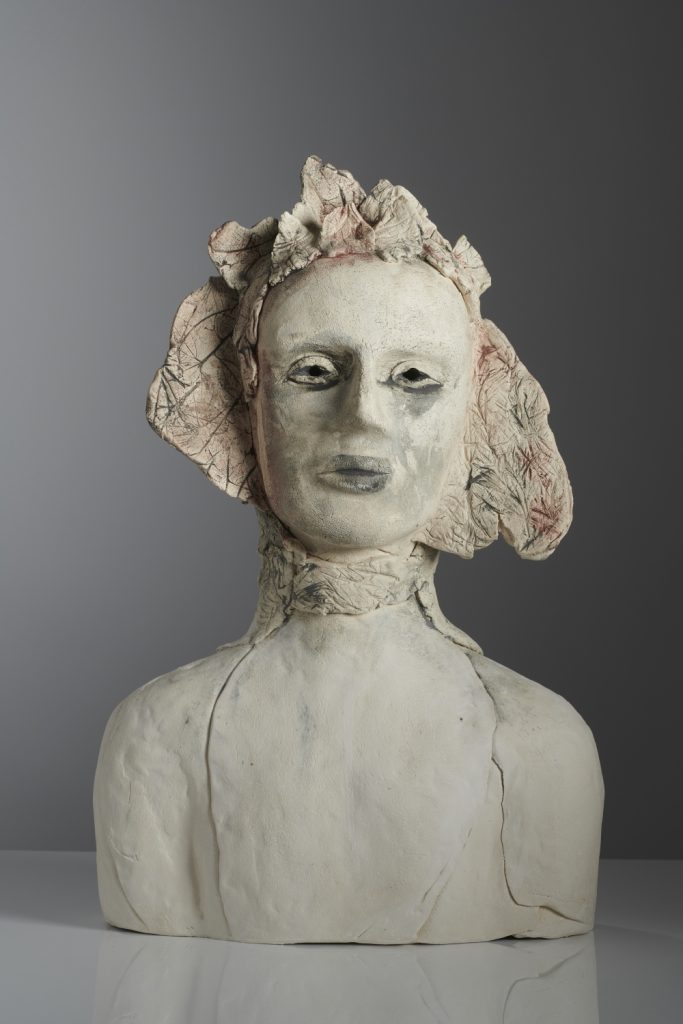
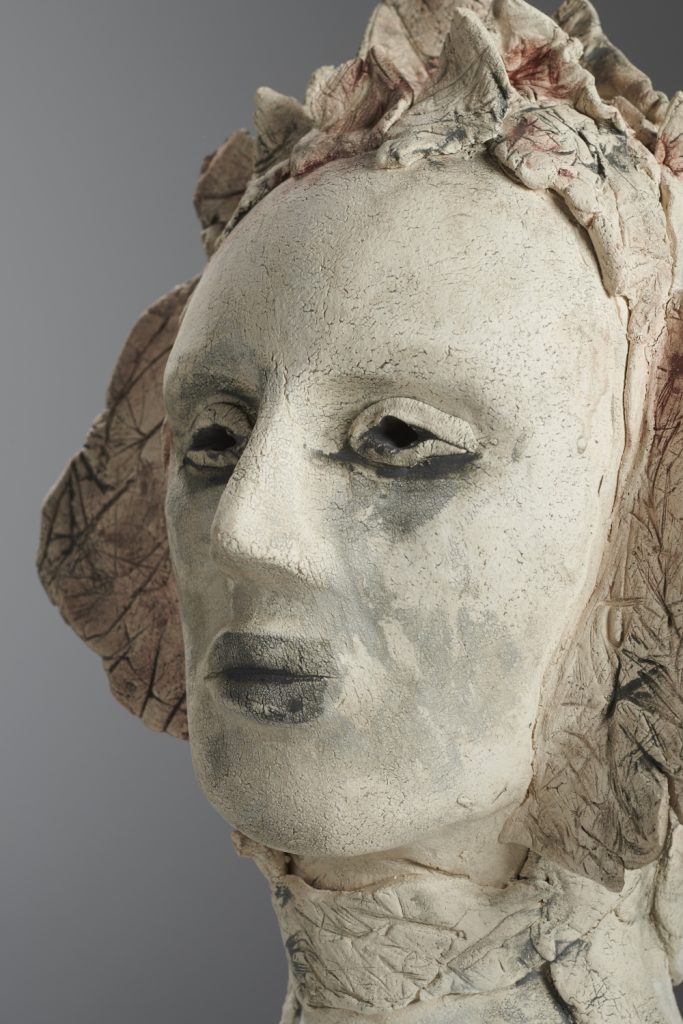
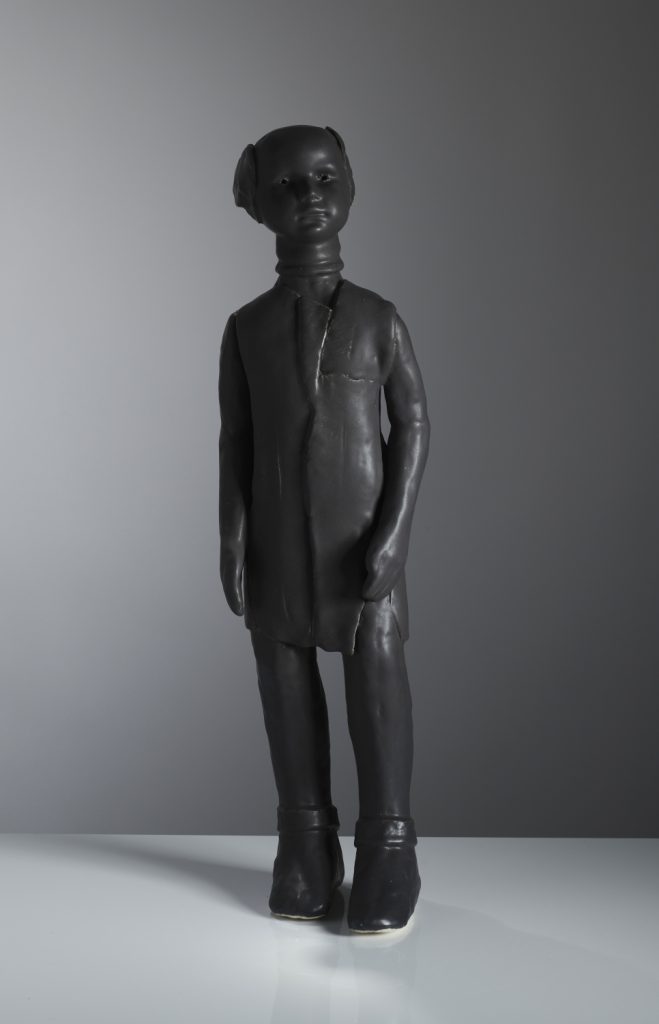
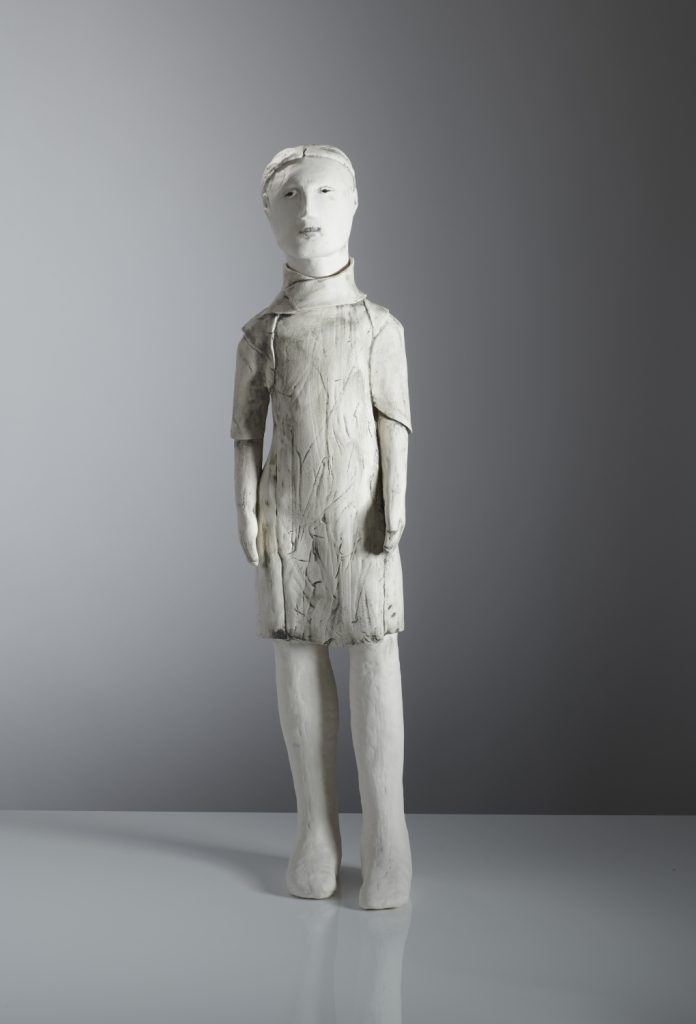
Read extends his theories specifically to funerary objects, ripe for animism as a condition of their function. As the physical buried object cannot travel with the deceased’s spirit, the object itself must be imbued with such a spirit that can be transported. Read describes this as ‘soul-stuff.’ The physical object is static, but the life infused is viable, almost tangible. For Brown, these archaic objects not only highlight the importance of clay as a material for reverence but are signposts for transition into other states of being. Her figures echo these ritual objects and, by association, are clearly imbued with that same ‘soul-stuff.’ Their doll-like scale and troop-like composition recall the regiments of buried shabti, a miniaturized terracotta army that could be imagined surfacing from the strata of an archaeological excavation.
Simultaneously, our animation of Brown’s figures is rooted in childhood experiences with dolls and puppets. Children’s playtime is built of intense imaginary belief, encouraged by parental interaction, where games are played and lessons taught with the help of an animated toy. Numerous stories depict adventures had by sentient toys: Dumas’ the Nutcracker, Collodi’s Pinocchio, Raggedy Ann, and Toy Story, and we carry this into adulthood. Brown says, ‘in my work, the childhood experiences are never far away, and her figures catalyze our memory, signposting our transformation away from that state. In her tableaus, we see figures amassed with intention, ready for action, as a child enacts scenes with their toys.
This childhood recall is coupled with the ‘uncanny valley, a phenomenon recognized by roboticist Masahiro Mori in the 1970s to describe feelings of eerieness towards an imperfectly human-like object. Brown describes her figures as bordering on the uncanny, breaching a liminal space between familiar and other, focusing on that point of metamorphosis. Despite the familiarity, the brain detects inauthenticity and provokes a sense of distinct otherness.
The phenomenon of the uncanny valley facilitates an exploration of that ambiguous space by suggesting otherness in the familiar. In translation from the Japanese ‘bukimi no Tani genshō,’ the uncanny valley garnered an unintentional connection to Sigmund Freud. His 1919 essay “Das Unheimliche” literally translates the uncanny as ‘The Unhomely,’ suggesting one is made to feel unwelcome or intrusive. Freud describes the uncanny as a resurfacing of repressed infantile complexes, manifesting in its most basic comprehension when tapping into the viewers’ unconscious and surfacing memories or happenings from childhood. This bridging of the psyche, connecting the past with the present and the collective with personal experience, is key to Brown’s work.
However, this ‘uncanny-ness’ has been exploited and heightened in horror genres of contemporary pop culture. Television and film tap into the motif of the haunted doll, countering children’s stories of adventuring toys with darker tales: Chucky in ‘Child’s Play, the clown in ‘Poltergeist,’ ‘Talky Tina’ of the Twilight Zone’s ‘Living Doll.’ Despite some viewers admitting an eeriness around Brown’s figures, any darkness is neutralized by the figures’ non-confrontational familiarity. They make no efforts to trick or confound us as to their reality. Their simple forms and plain expressions render their doll-likeness playful and almost humorous. We recognize their animism as our own.
For her 2021 exhibition ‘Untold Forms of Life’ at Messums London, Brown’s sculptures had seemingly moved away from manifestations of ancient symbols and mimetic forms to focus on the human experience. These figures even have expressions as Brown experiments for the first time withdrawing on her sculptures. The eyes are concentrated, brows furrowed, lips primed to speak. Brown’s figures appear anxious, lonely, and despondent, perhaps a glimmer of hope in some faces, but Brown admits she has unconsciously channeled her own recent emotions into these works.
Under the burden of these last devastating few years, these figures manifest a truly universal experience. There are no archetypes to guide our actions; we have no instincts this far from normality, and Brown draws attention to the heavy toll of that, stripping away the stiff upper lip and brave faces. Throughout her work, Brown has examined the collective unconscious and the liminal spaces of our being, and through characters that we animate, she allows us to know ourselves better. These new sculptures are literal personifications of our contemporary experience and encourage acknowledging that fragile state, advising us to embrace and nurture our current otherness.
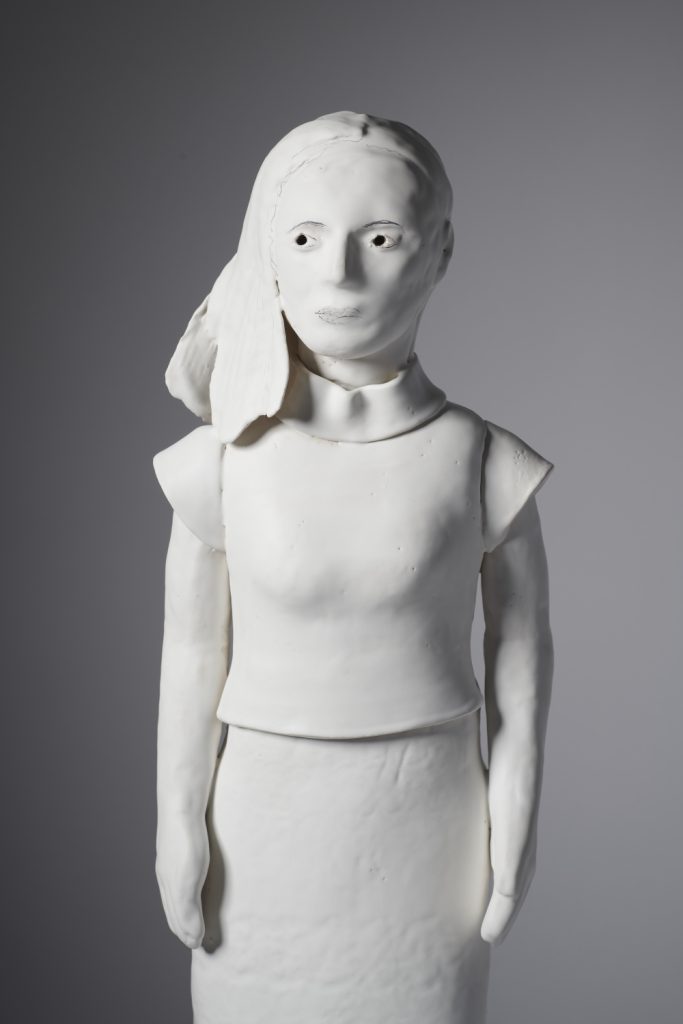
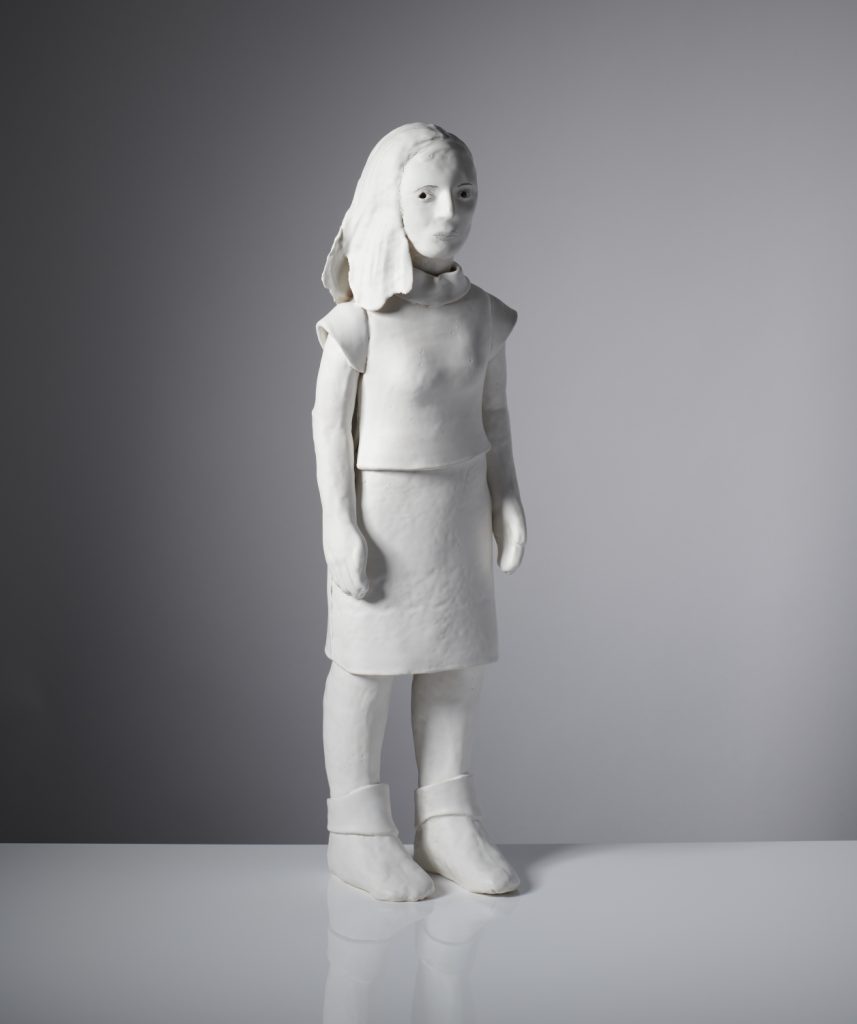
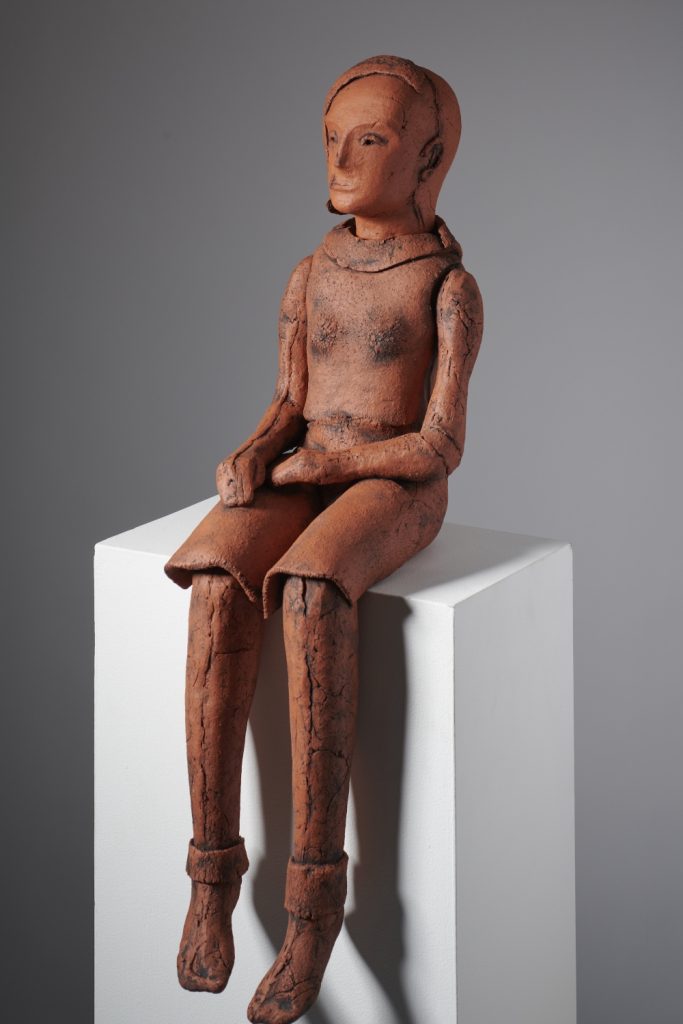
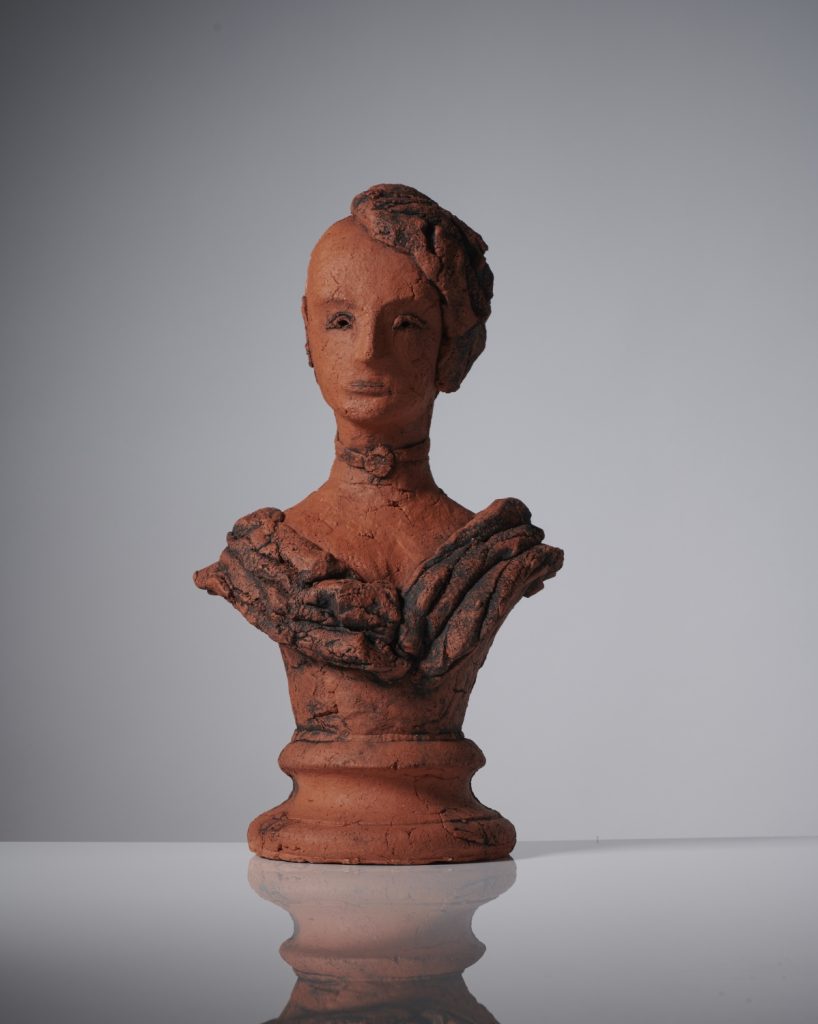
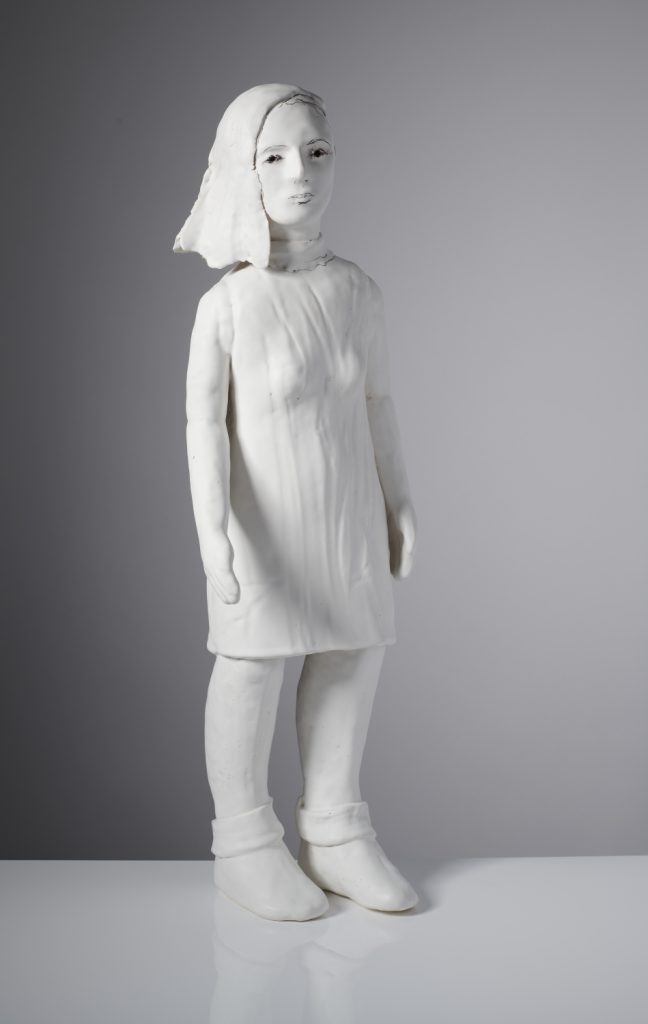
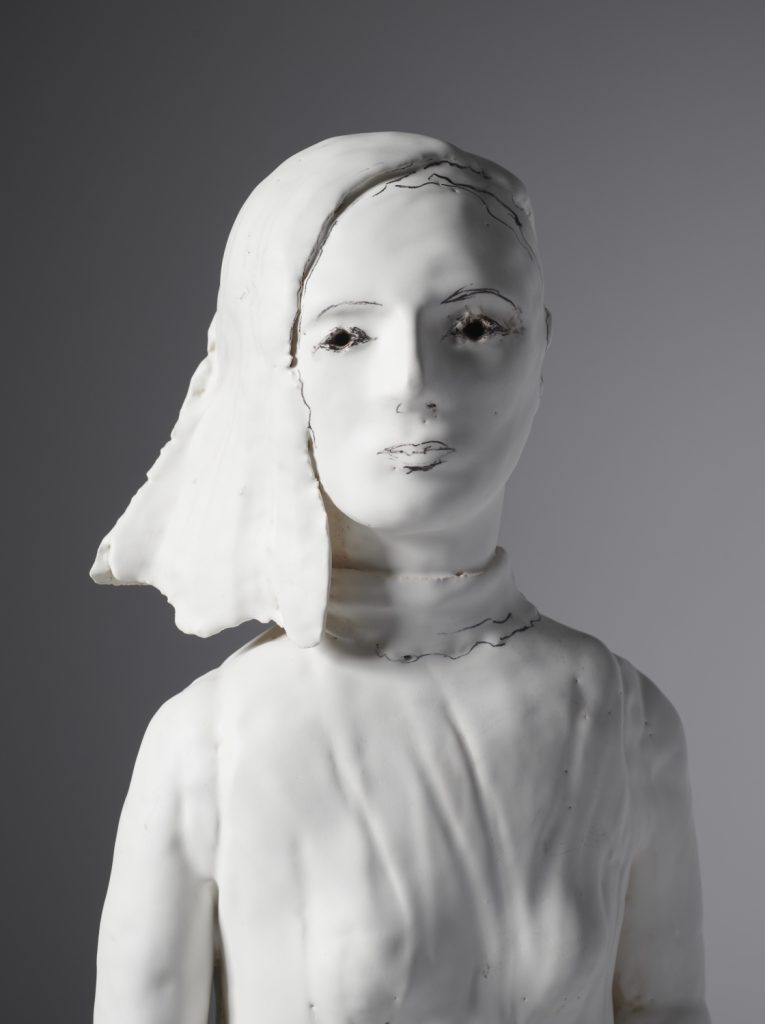
The title of this exhibition is Brown’s nod to the secret life of her figures, giving credence to our imaginings. Quoted from Bruno Schulz’s The Street of Crocodiles (1934), it declares, ‘There is no dead matter… Its inertia is merely an outward show behind which untold life forms lie hidden. Throughout, all manner of inanimate objects are imbued with short moments of illusory life. Schultz, it seems, can’t resist animating the lifeless figures around him: ‘have you heard at night the terrible howling of these wax figures, shut in the fair booths; the pitiful chorus of those forms of wood or porcelain?’ and, ‘the light … thick from dreams of plaster cast heads … listen … to the silence laden with the sighs and whispers of the crumbling gods’. Schulz also ventures into the reason for this animism, asserting every person’s appetite for genesis. ‘We wish to be creators … we want to have the privilege of creation, we want creative delights, we want – in one word – Demiurgy … for creation is the privilege of all spirits.’ Numerous passages even depict the sculptor: ‘In the depth of matter, indistinct smiles are shaped, tensions build up, attempts at form appear. The whole of matter pulsates with infinite possibilities that send dull shivers through it—waiting for the life-giving breath of the spirit’. Brown has found her demigury, creating her world order in clay.
In her newest work, exhibited in ‘Icons of Uncertainty’ as Messums Wiltshire, Brown investigates ideas around protection, vulnerability, and potential loss and how man manifests these ideas in objects, whether as coping mechanisms or signposts or memorials. In her secular memento mori, she references the mythological, the ethereal, and the religious. The continuity of meaning across medium and function is essential to her. She states: “I am creating deities in a secular age. Their [literal] hollowness is enclosed by their clay shell, the kabuki, which protects the inner self, the wound, the growing tree, the soft creature, allowing healing.”
In making and meaning, Brown’s sculptures explore opposition and transience, states of liminality. As ever, in her new figures, her use of clay is sculpted and molded, carved out and pushed into; her characters are both still and animated, dead and alive. Unsurprisingly, she continues to find inspiration in historic ceramic grave goods. They are objects caught between two worlds, a physical body remaining on this earthly plain yet embodied with a spirit transported to the next; their role is liminal, facilitating movement between life and death. The historic convergence of clay and grave goods describes a parallel transient nature. Clay is a material of change, malleable and tangible in its raw earthly form and transformed into permanence by fire. Clay and ceramic are of two opposing states, defined by the elements of creation and destruction, respectively. In referencing grave goods, Brown’s new sculptures have a sense of finality. Death is the final transition, the end of a road, and these objects are markers of one’s lost presence on this plane; the figure’s proscribed sentience is a consolation to those left behind. However, if recent times have demonstrated anything about the human condition, it is its capacity for resilience. Where her previous works acknowledged our emotional toil, perhaps Brown’s ‘Icons of Uncertainty’ signpost our resilience, our attempt to understand ourselves better, to guide ourselves through difficult times by whatever means necessary.
Historically clay also has a deep connection with votive figures; in particular fine examples survive from Ancient Mesopotamia and Etruria. These were small clay sculpted figures, presented as an embodiment of the worshiper at a meaningful place to an otherworldly or supernatural being. Its presence may ask for protection or guidance or may exist to be present in place of the individual’s reverent soul. In a contemporary and often atheist society, where concerns about personal well-being are significant, and efforts to tackle them are well established, perhaps Brown’s sculptures represent a similar votive offering—this time appealing to our self-protection and capacity for personal resilience. These figures may embody us and help us look inward to heal our unseen wounds and, if not entirely protects us from that final transition, allowing us to better understand our present state of being.
This essay was originally commissioned by Messums. Christie Brown ‘Icons of Uncertainty’ can be viewed at Messums Wiltshire until November 20, 2022.
Visit Christie Brown’s website.
Photos by Sylvain Deleu
Photo captions
- From Icons of Uncertainty series 2022:
Crown of Leaves, Stoneware, 2022, 70x22x16 cm
Metamorphoses, Stoneware, 2022, 51x24x25 cm
Remembrance, Stoneware, 2022, 83x24x22 cm
Icon for Peter Teddy, Stoneware, 2022, 102x21x23 cm
Icon of Silence, Stoneware, 2022, 50x24x25 cm
Messenger, Stoneware, 2022, 70x21x17 cm
Waiting, Stoneware, 2022, 86x23x21 cm - Anxiety, Stoneware, 2021, 69x21x18 cm
Contemplation, High fired terracotta, 2021, 79x22x31 cm
Pensive Portrait, High fired terracotta, 2021, 47x27x21
Hope, Stoneware, 2020, 70x22x19 cm


